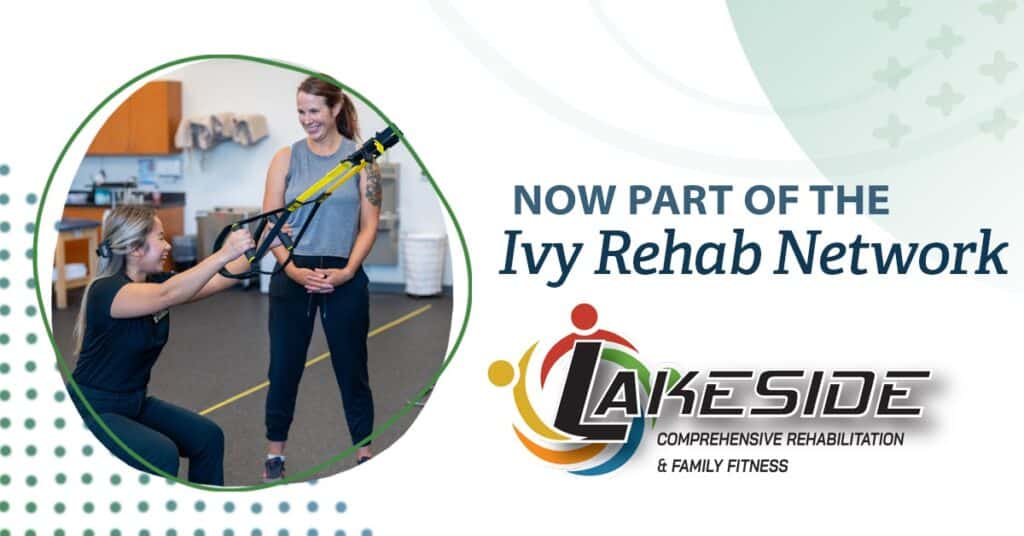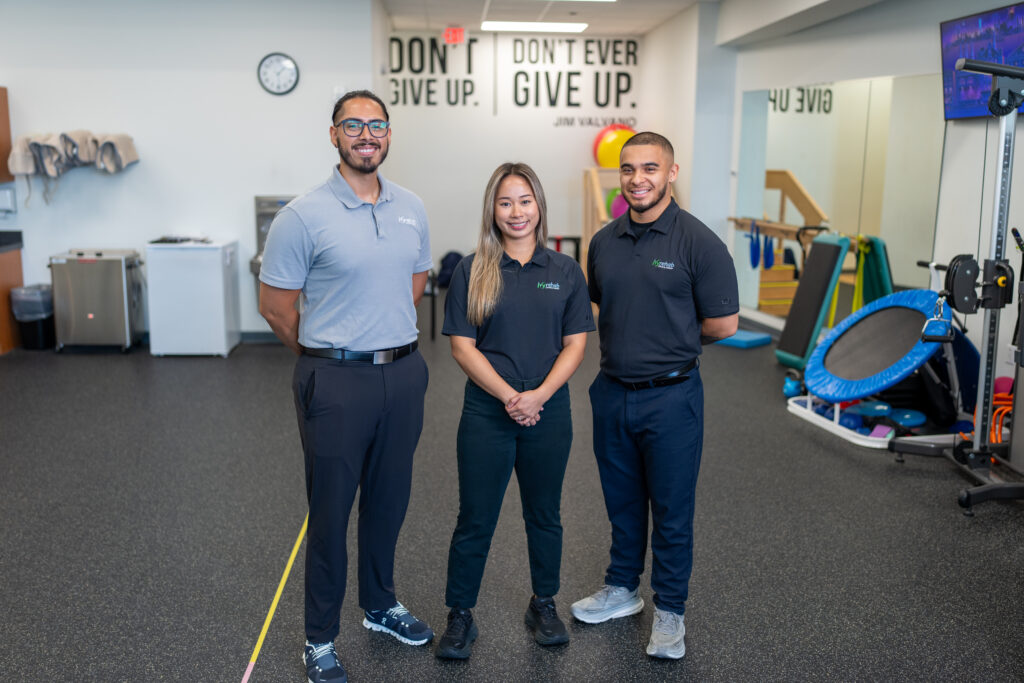This content was updated for accuracy and relevance on January 12, 2022.
Have you noticed you are always running to the bathroom, leak a little when you laugh, cough or sneeze, or avoid intercourse because it hurts? It’s an embarrassing problem most people don’t talk about: bladder problems, pelvic spasms, or pelvic floor dysfunction.
Approximately one in four women experience some form of pelvic floor dysfunction, ranging from chronic pain to constipation to stress and urge incontinence. However, men also experience urinary incontinence, especially after prostate cancer. Often, women and men suffer in silence out of embarrassment and shame that stem from their weak pelvic floor muscle symptoms, or they believe there isn’t help available.
While certain illnesses and lifestyle factors can contribute to incontinence, the truth is, loss of bladder control is not a natural part of aging. And the good news is many pelvic floor disorders can be treated through physical therapy and lifestyle changes. You are not destined for a life of pads or pills.
Working with a specially trained physical therapist can alleviate pain, restore normal bladder control, reduce pelvic muscle spasms, and help improve your quality of life. Whether you currently have pelvic floor problems or not, this guide on pelvic floor dysfunction therapy can help you support these muscles and reduce further issues later on.
What is the Pelvic Floor?
The pelvic floor acts like a hammock of connective tissue and supports the pelvic organs, primarily the bladder, uterus/prostate, and rectum. These muscles and connective tissue also help control the functions of the bowel movement and bladder. The female pelvic floor includes the openings of the urethra – for urination, the vagina – for intercourse and childbirth, and the anus – for fecal elimination.
The pelvic floor consists of pliable muscles that wrap around these openings in a figure-eight shape. There are a lot of organs in a tiny space of the pelvic area and they can drop or shift due to childbirth, obesity, a hysterectomy, and age. Tight, spastic or weak pelvic floor muscles may be a result of disuse, surgery or trauma.
Men Have Pelvic Floors too!
Men experience incontinence or other pelvic floor dysfunction symptoms as well and can usually be treated similarly. For more complex male pelvic pain and dysfunction, some therapists specialize in treating male pelvic floor dysfunction.
Signs of Pelvic Floor Muscle Dysfunction
There are a variety of symptoms associated with pelvic floor dysfunction, including urinary or fecal incontinence, a frequent or urgent need to urinate, pelvic floor spasms, or chronic pain in the pelvic area.
- Pain in the abdominals, buttocks, pelvic floor, tailbone, vagina, rectum, penis or testicles
- Urinary urgency or painful urination
- Constipation or strained bowel movements
- Lower back pain
- Painful sex or inability to have penetrative sexual intercourse for women
- Pressure in the pelvic region or rectum
- Pelvic organ prolapse
- Pelvic muscle spasm
- Vaginismus or endometriosis
- Vulvodynia (pain of vulva) and genital skin conditions
- Pregnancy and postpartum recovery
- Painful or premature ejaculation for men
Two Most Common Symptoms
Most patients have complaints of pain or issues with bladder or bowel control when they have a pelvic floor disorder. Urinary incontinence can present in many different ways, including abnormally frequent urination and a strong urge to urinate. Leakage is often, but not always, associated with incontinence. Other symptoms of a pelvic floor disorder include painful urination and stop and go urination.
Stress incontinence occurs with activities such as coughing, laughing, sneezing, jumping, lifting, and running. If the person has weak pelvic floor muscles, they have trouble holding back urine during times of increased pressure on the bladder.
Urge incontinence is related to an overwhelming urge to urinate, sometimes unexplained, that is so strong you cannot hold back the flow of urine. You can have urinary urgency without leaking if the pelvic muscles are weak. Certain things can “trigger” an urge, like getting close to a bathroom, being near water, or the cold. Urge incontinence can develop from overactivity of the bladder muscle – due to neurologic damage or irritation to the bladder itself – like drinking tons of coffee.
Mixed incontinence is a combination of the two and is most common in older women.
Pelvic pain can be experienced in the pelvic floor, in the abdomen, or in the low back. Often the pain is chronic and severe. Some may experience discomfort in the way of heaviness or bulging in the pelvic floor. This chronic pelvic pain and/or discomfort can interfere with daily activities and impede sexual function.
Why See a Pelvic Floor Therapist?
The good news is there are treatment options you can explore for pelvic dysfunction.
Before costly and invasive surgery, it is worth a visit to a urogynecologist, urologist, specialty bladder clinic or pelvic floor therapist. Many pelvic floor conditions can be treated and managed through a combination of therapies, including pelvic floor rehab.
PFTs specialize in the rehabilitation of the pelvic floor and resolving dysfunctions in the pelvis that contribute to bowel movement, bladder, sexual health, and pain complaints. They can help you understand your symptoms and lifestyle factors that may aggravate them. They will work with you to create a personalized program to minimize or manage pelvic discomfort or pain, along with retraining and strengthening your muscles, and maintaining lifelong pelvic health.
Your physical therapist may recommend:
- Education: Nutrition and behavioral strategies including reducing bladder irritants and retraining your bladder to go less often
- Pelvic floor exercises: Working with a therapist to learn to do Kegel exercises correctly at home with or without a biofeedback tool (egg or wand)
- Manual therapy: Hands-on trigger point massage to release muscle tension, improve posture, blood circulation, and mobility
- Therapeutic exercise: Stretching, yoga, and core stabilization exercises
- Self-care: Mindfulness, breathing techniques, and other pain management methods
- Pelvic floor biofeedback: This technique helps patients “see” how the pelvic floor muscles are working by doing Kegels and watching the results on a computer screen.
- Electrical stimulation: Using a probe inserted into the vagina or anus, a low-voltage electrical current helps exercise muscles, reduce pelvic floor spasms, and teach patients how to coordinate muscle contractions.
Tips for a Healthy Bladder
- Aim to go every 3-4 hours
- Avoid “just in case” (JIC) urination
- Take time to relax and sit on the toilet. Don’t hover or rush through urination!
- No straining or “bearing down” on your pelvic floor
- No nighttime just in case peeing; avoid fluids a few hours before bed
- Avoid constipation with plenty of water and high-fiber foods
- Drink enough water (approximately ounces=body weight in kg)
- Limit bladder irritants including coffee, soda, and sugary drinks
- Void before, after sexual intercourse
- Do regular Kegels/PFM exercises
Don’t Ignore your Pelvic Floor!
When the pelvic floor is not functioning correctly, it can impact a person’s life on many levels. Don’t be embarrassed to discuss these issues and find treatment. It is more common than you might think! These issues can be very personal and difficult to address. Treatment through pelvic floor physical therapy is very private, and each patient is treated with respect and understanding.
Contact an Ivy Rehab clinic today and free yourself from pain, pads, and revolving your life around bathrooms!
Article by: Holly Lookabaugh-Deur, PT, DSc, GCS, CEEAA
Director of Clinical Services at Ivy Rehab Network
Practicing physical therapist, partner and Director of Clinical Services at Ivy Rehab Network with more than 40 years of experience in sports management with young athletes, and is board certified as a geriatric clinical specialist and certified exercise expert for aging adults. Deuer is certified as an aquatic and oncology rehabilitation specialist and serves as adjunct faculty at Central Michigan University and Grand Valley State University.






